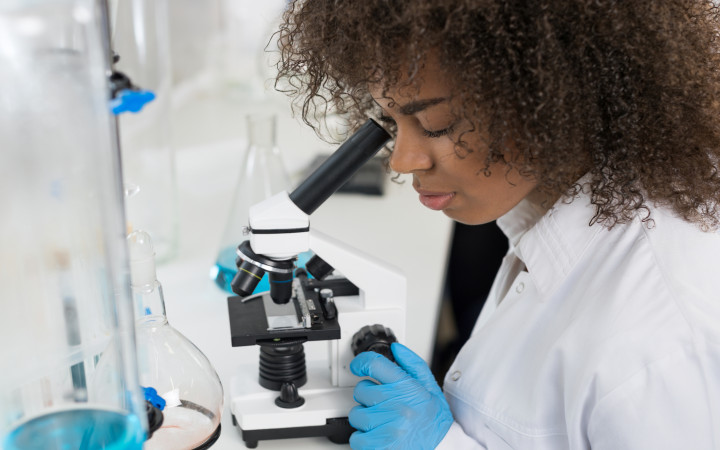Today’s Wonder of the Day was inspired by C. C Wonders, “Why was the microscope invented, and who invented it?” Thanks for WONDERing with us, C!
Do you ever look at bugs through a magnifying glass? Have you used binoculars to spot birds? What about a telescope for the Moon? Many tools help us see things a little closer. One tool that helps people understand the world more clearly is the microscope.
Through a microscope, we can see the smallest parts of our world. We can see the cells that make up each living thing. We can see the salt molecules on our food. We can even see the smallest grains of dirt on Moon rocks! Who can we thank for this tool? The inventors were Hans and Zacharias Janssen, a Dutch father and son who made eyeglasses in the 16th Century.
As eyeglass makers, the Janssens always worked to improve sight. One day in the 1590s, they put a lens on each end of a tube. Looking through the tube, they found that it made objects on the other end look bigger! Another eyeglass maker named Hans Lippershey made a similar tool around the same time. These first microscopes quickly caught the eyes of others. Galileo was even inspired to make one of his own. Another Dutchman named Anthony Leeuwenhoek used stronger lenses to improve the Janssens’ creation. Today, we call Leeuwenhoek the “Father of Microscopy.”
Microscopes have helped people learn a lot about our world. They’ve helped us discover cells, bacteria, and DNA. Scientists have also used microscopes to find new elements and cures for illnesses. Have you ever had strep throat? If so, the doctor probably gave you an antibiotic to treat it. Without microscopes, that wouldn’t have been possible! All of our medicines exist because of our ability to study illnesses through the lens of a microscope.
Microscopes improve each year. The first microscopes made by the Janssens magnified objects by nine times. Today, the world’s strongest microscope helps us see objects at 200,000 times their size! In 2014, a team of researchers made a very powerful microscope. Through it, they can watch proteins grow inside cells. They won the Nobel Prize in Chemistry for this invention. Experts believe this microscope will help fight diseases like Alzheimer’s.
Are you ready to make discoveries of your own? Using a microscope takes practice. Remembering a few tips can help you use the tool. Always make sure the microscope is on a flat surface, and remember you can adjust both lighting and focus to see objects more clearly. Find an adult to help you master the basics.
What would you like to see under a microscope? Lots of things look amazing up close! The next time you’re outside, find something you’d like to see more closely. What if you could see the tiny cells on your favorite flower? The smallest part of a bird’s feather? You never know when taking a closer look will lead you to a cool new discovery.
Standards: ELA.RH.6-8.2, ELA.RH.6-8.10, CCRA.R.1, CCRA.R.10, CCRA.W.2, CCRA.W.3, CCRA.SL.1




